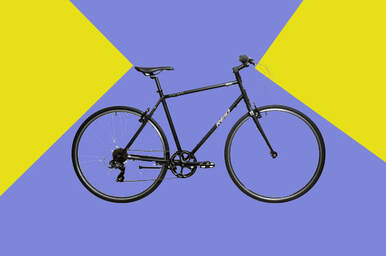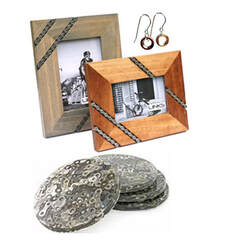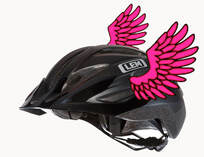 If you want to be visible on the roads it helps to have a lighting system and a smart system includes both active and passive elements. In the last blog we talked about lights both at night and during the day, front, rear, on wheels, and helmets. But having passive or reflective features is a plus that multiplies your safety. If a headlight or other light source is shone upon something reflective it will shine back, they never run out of batteries, and even if a reflector is cracked or broken, it still offers some visibility. Anything that reflects as a result of a rhythmic pattern, an up and down motion of the pedals or rotation of wheels, will catch the eyes of other road users better than something static. Reflective elements are available both on the bike and on the cyclist.  Using your bicycle lights during daytime hours is a brilliant strategy for enhancing your safety while riding a bike. There are lots of distractions on the streets from the various modes of transportation (pedestrian, auto, bike, scooter) and from cell phone usage. It is common sense, and legally required, for cyclists to utilize a front light and rear reflector at night, but there are studies that say the majority of cycling crashes occur during daylight. Daytime running lights on autos have made a positive impact on traffic safety so there was a 12 month Danish study to see if safety benefits extend to biking. In the study the use of daytime lights resulted in a 19% reduction in personal injury rates—that is a 1 in 5 drop in the risk of being injured. Being “always on” is a good idea.  You may know people that love cycling. They usually show it by cycling more or encouraging others to do so. Annette Fiscelli shows her love for cycling in her business that honors the bicycle by making something beautiful from parts of a bicycle that is no longer useful and giving them new life. Her business, Links by Annette, was established 5 years ago to create home goods and jewelry from recycled bicycle parts. She collects discarded and dirty parts from bike shops, cleans and degreases them, and uses her imagination and her newly developed skills of welding, weaving, crocheting, sewing, soldering and woodworking to make upcycled goods.  One Monday morning TIffany, a fellow office worker, came into our work area with her face scratched up. When I asked what happened she said she took a tumble off her bike while riding over the weekend. “Were you wearing a helmet?” I asked. Then there was a long pause before she said, “I was, but it flew off.” It goes without saying there is no reason to put a helmet on your head if not secured properly. This also goes to carrying a helmet dangling from your handlebars—you might as well just leave it at home for all the good it is doing. It does not matter if you purchased a $40 or a $400 helmet, you are not protecting your head if the helmet does not fit. Here are some considerations on helmet fit: |
Earth Rider Blog about CycingAuthorSharon Kaminecki and others comment on adventures in bicycling and other stories Categories
All
Archives
August 2023
|


